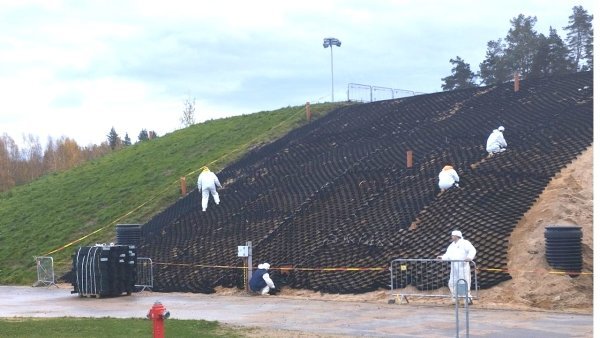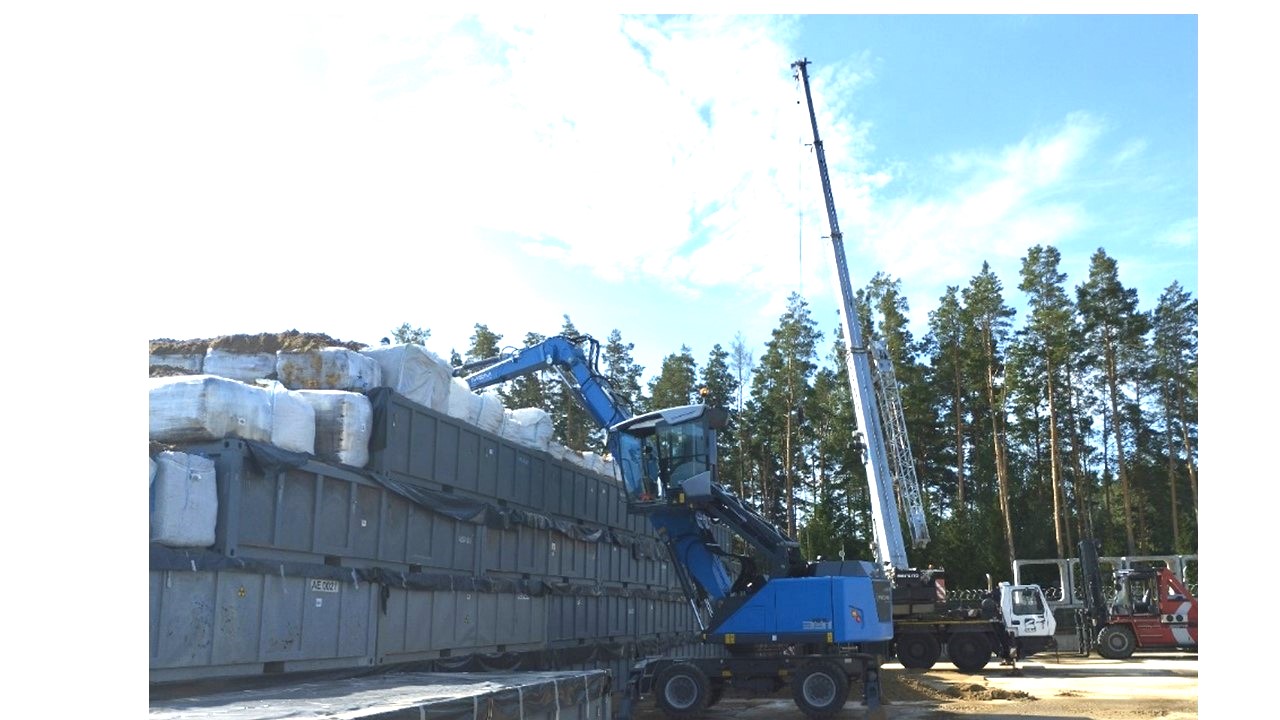INPP has successfully completed its second campaign for the disposal of radioactive waste
2023

In mid-November 2023, the Ignalina Nuclear Power Plant (the INPP) conducted the second radioactive waste (RW) emplacement campaign at the Very Low-Level Radioactive Waste Landfill Facility (hereafter - the landfill, VLLRWLF (Project B19)), thereby completing the "hot tests" at the site. Hot testing involves testing equipment and processes using radioactive waste. The first RW disposal campaign was conducted between 2022 and 2023.
The tests confirmed the effectiveness of the radioactive waste treatment process, and necessary adjustments were made to refine the technology for industrial operation of the repository.
During the two campaigns, waste packages were placed on the base plate of the landfill: half-height ISO containers, bales of compacted waste and large bags. This resulted in the formation of a mound-shaped earth structure, which was covered with engineered barriers made of artificial and natural insulation materials to protect the waste from environmental influences. Altogether, 308 half-height ISO containers and more than 2,000 soft packaging units were placed in the landfill during the two campaigns. Most of the work was carried out by the INPP employees.
Once VATESI has approved all the necessary documentation, we expect to receive a permit to operate the landfill on an industrial scale shortly. During this operation, we plan to conduct 13 RW injection campaigns.
 The disposal and transportation of waste to the VLLRWLF landfill is conducted in accordance with modern environmental protection requirements and the IAEA Principles of Radioactive Waste Management. The VLLRWLF is used for the disposal of radioactive waste without any intention of future retrieval. The waste will be stored at the INPP landfill until it is full, and then the landfill will be closed. The safety justification for this landfill sets out a timeframe for active institutional maintenance for a period of 30 years and passive maintenance for a further 70 years. After this period, the landfill will be available for unrestricted use. The project is funded by the European Union's Ignalina Programme.
The disposal and transportation of waste to the VLLRWLF landfill is conducted in accordance with modern environmental protection requirements and the IAEA Principles of Radioactive Waste Management. The VLLRWLF is used for the disposal of radioactive waste without any intention of future retrieval. The waste will be stored at the INPP landfill until it is full, and then the landfill will be closed. The safety justification for this landfill sets out a timeframe for active institutional maintenance for a period of 30 years and passive maintenance for a further 70 years. After this period, the landfill will be available for unrestricted use. The project is funded by the European Union's Ignalina Programme.

